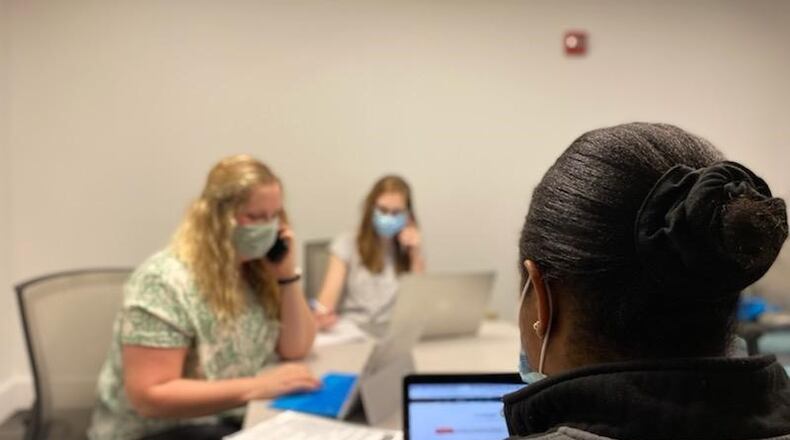Hospitalizations continue to reach new highs, with 1,982 COVID-19 Ohio hospital patients reported on Wednesday.
When a person tests positive for the coronavirus, they will receive a call from a health care worker known as a contact tracer. These local workers confidentially inform the person’s recent close contacts that they need to quarantine because they could be infectious. The contact tracers also help connect people to support if they need it in order to isolate, such as if they need help with accessing food while isolating at home.
This time-sensitive and critical work, however, is more difficult when the virus is widespread and new cases continue to pour in.
“It’s certainly been overwhelming to our staff, especially the disease nurses and epidemiologists,” said Preble County Public Health Commissioner Erik Balster.
Balster said phone calls to cases and their contacts may be delayed because of rising case counts and limited staff. He said about half of the staff of 19 people in Preble County are working on the COVID-19 outbreak, with about 252 cases they are actively monitoring. Even with the help of Wright State students pitching in on contact tracing, they’ve been working long hours to keep up.
“Our demand is surpassing our supply of being able to keep up with it,” Balster said. “We are getting it done, it’s just not at the pace we were able to do basically up until the last couple weeks.”
In a notice to the public Tuesday, Preble County Public Health said if you are being tested you should stay home and isolate while waiting for results. If you get a positive test, isolate away from other family members for 10 days from when symptoms began.
If you’re positive, you can also contact people you have been in close contact with up to 48 hours before your symptoms started up until the point you isolated. A close contact is anyone within six feet, masked or not, for at least a total 15 minutes.
Health officials emphasized that people who are asked to quarantine need to complete their quarantine for the full 14 days even if they get a negative test. Sometimes people can test negative because they are not at a point when the virus would be detected by a test, but could still potentially infect people if they break quarantine early.
In normal times, a team of two public health workers in Montgomery County trace contacts for more typical diseases, such as sexually transmitted diseases. Now about 50 people are in on the effort.
Dr. Michael Dohn, medical director for Public Health - Dayton & Montgomery County, said the department has consistently had more than 125 cases per day, with sometimes more than 200 cases in a day “so the cases accumulate faster at this point than we can get through. That’s why we’re about two to three days behind.”
If you’re sick and test positive for COVID-19, you should be staying home and isolating whether or not you’ve received the call yet from a contact tracer, Dohn said.
Dohn said one of the impacts with delays in contact tracers reaching sick people is that it means delays in alerting their contacts so they know they need to quarantine to avoid unknowingly transmitting the disease to someone else.
It also means delays in helping people who might need support in order to stay home, because their team can help connect people to social services for things like groceries if needed in order to stay home.
“The problem with the two-to-three days wait is that we can’t help them if they’ve got difficulties,” Dohn said.
Darke County’s Health Commissioner Terrence Holman said his office has two full-time workers doing contact tracing and some part-time people also helping out. New cases have been down the last couple of days, which helped, but the team had been working long hours on other recent days when the daily cases were in the 30s or 40s.
“They were able to handle it, but it was some long hours,” Holman said.
He said a significant number of people who don’t want to answer questions with the contact tracers.
“They are probably worried about quarantine, but it is important to try to slow down the spread,” Holman said.
About the Author

